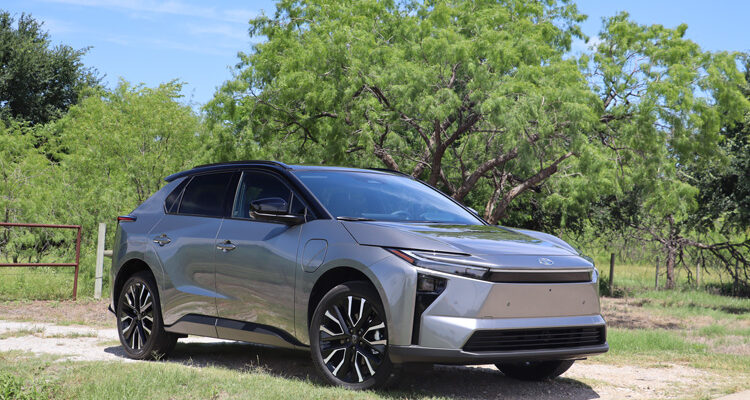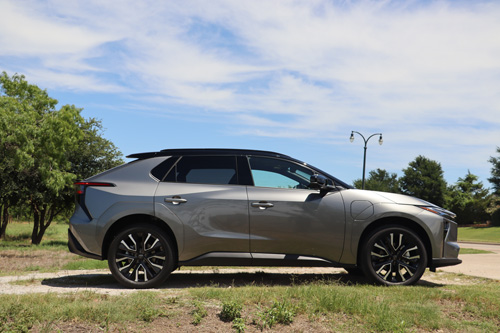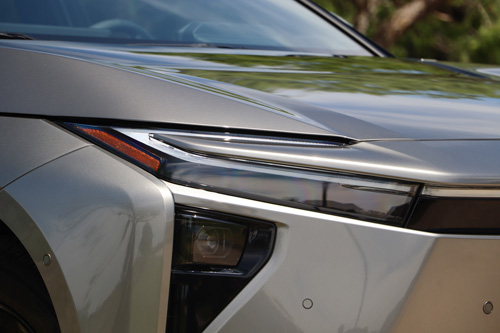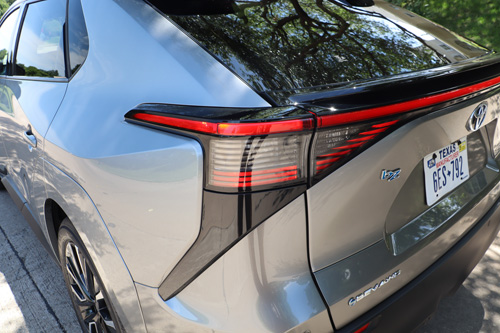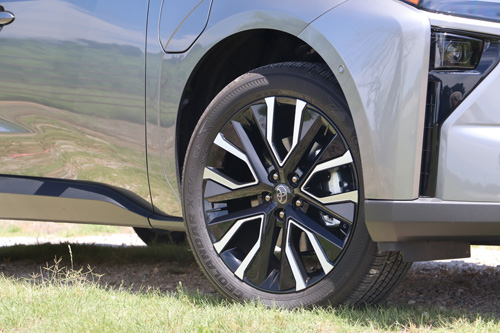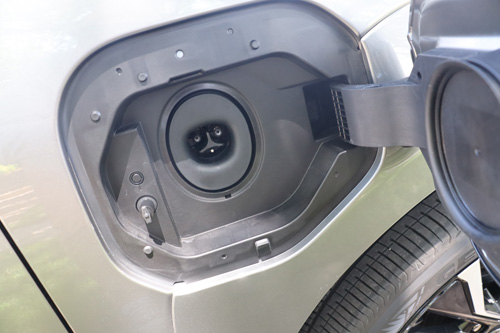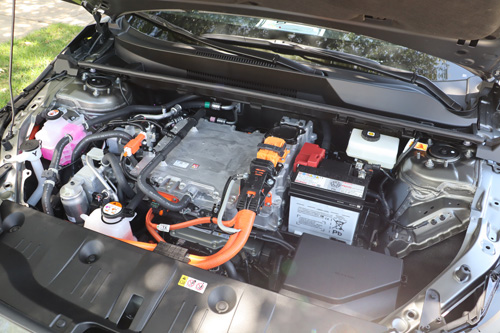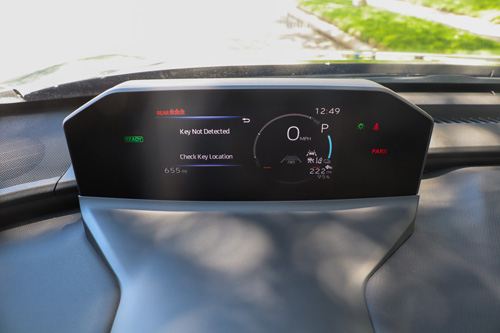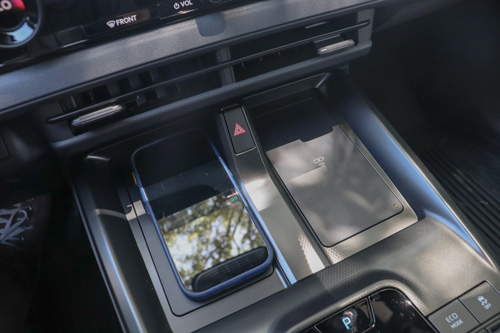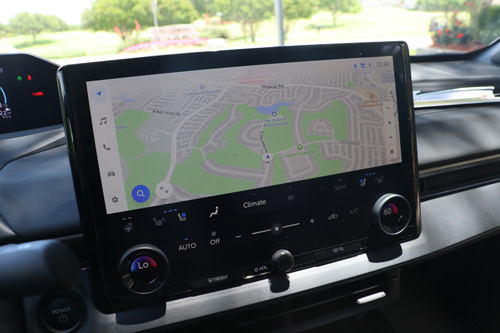Plano, Texas: They asked, and Toyota listened: for 2026 (and, presumably, beyond), the oddly-named bZ4X electric crossover has dropped two letters and will simply be known as “bZ” going forward. That’s probably a good thing as the previous name just didn’t all that much sense and sounding more like an internal code for a pre-release version the car. Or something.
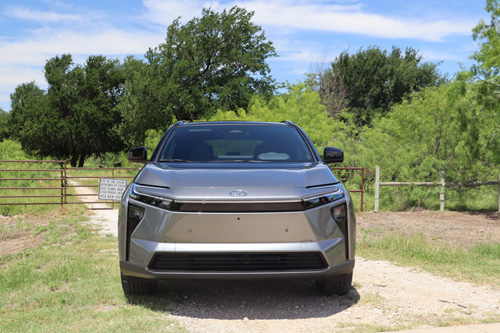
Far from simply getting a new name for ’26, the bZ has been comprehensively refreshed as well with the biggest tweaks also answering complaints from owners and potential buyers alike: styling and range. Used to be you’d get just over 240 kilometres on a good day with the bZ4X, but Toyota is now claiming 460 km from the dual-motor AWD model, which is a 25 per cent jump.
We do need to include an asterisk here because while the bZ continues to be offered as both a single-motor FWD model as well as the AWD model, the former actually sees its range dip to about 378 km thanks to its having a smaller battery than previous. Toyota maintains this is a cost-saving measure (pricing hasn’t yet been announced), but we say that it’s, well, a bit of a bummer. AWD models of a car do tend to outsell FWD models in Canada, though, so the lion’s share of buyers will likely be happy with this result.
Since in the EV world power and range tend to go hand-in-hand, the increased range of the AWD model has also led to increased horsepower to the tune of 338 hp, which represent a none-too-shabby 50 per cent boost. That was another concern with the old model: not enough range, and as a result, not enough power and we just didn’t see the peppy pickup one would expect from a direct-drive EV. That should all change with this bump in power.
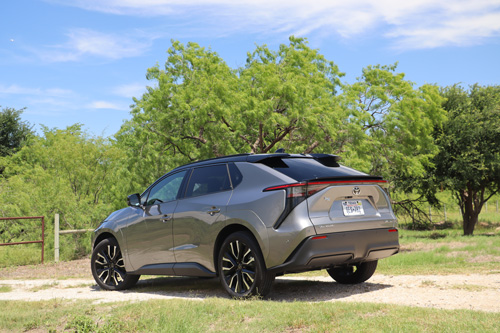
Styling-wise is a bit of a “Tale of Two Cities” situation in that the front end is a vast departure from the previous model while not much has changed in the rear. It gets Toyota’s new “Hammerhead” styling language first seen on the Prius, which adds cool c-shaped daytime running lights and a smooth lower fascia with seamlessly-integrated body-colour bumpers. Also new for ’26 is the availability to have body-coloured fenders depending on exterior colour choice. Used to be that all bZ4X models had contrast-colour grey-black fenders, so the only way to hide that would have been to get a black car. For ’26 some colours still do get contrast-colour fenders but the ones that don’t look very classy and upmarket.
‘Round back, we find the same taillight lenses and twin roof-mounted wings, with changes for ’26 amounting to little more than some new badging.
Inside, the main additions include a standard 14” central infotainment display as well as optional nine-speaker JBL audio, while dual wireless charge pads are standard on all bZ trims (XLE FWD, XLE AWD, Limited AWD). As was the case previous, the speedometer sits atop the dash, so in the driver’s line of sight without obstructing the view forwards. It essentially takes the place of a head-up display, and it works.
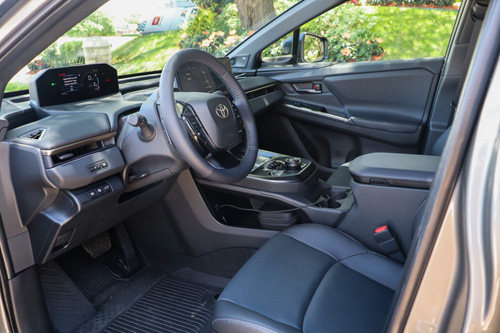
We spent the duration of our test in the dual-motor AWD version and that 338 hp can really be felt as soon as you dip in to the throttle. At 2,065 kilograms in Limited AWD spec seen here the bZ is no lightweight, but the power on offer and the throttle response makes up for that and has you squirting through intersections with ease. There’s also no problem getting up to speed on the highway. It’s properly quick, this EV CUV and inspires driver confidence as a result.
As we touched on in the introduction to this piece, the ride is very good even if you spec the 20” wheels but the chassis and suspension tuning is only half the battle when it comes to occupant comfort. The seats are well padded and supportive both front and back and while there is a nice, deep storage bin underneath the front seat armrest and a deployable armrest in back, hips and stray limbs don’t get overly squeezed. The optional full-length glass roof doesn’t impinge too much on front- and rear-seat headroom, which is a nice bonus.
If that’s a nice bonus, then the added power is a very nice bonus, as is the range. Not only the range, but the charging, too; for ’26, all bZ models come standard with NACS charging, which means you can plug in to a Tesla Supercharger and charge from 10-80 per cent in about 30 minutes. If you prefer to use more traditional charge ports like a DC fast charge, each bZ sold comes with an adapter that will allow you to plug in to those, as well as a level II home charger if you happen to have one.
The update Toyota has bestowed upon the bZ is one of the most comprehensive I’ve encountered in recent memory. Often these updates extend barely beyond some feature availability adjustments, some new colour, maybe a slight boost in power but so much has been done here that one couldn’t be blamed for thinking this was a proper all-new version of a model. It isn’t, but it has started quite the EV boom over at Toyota; by 2026, the North American EV line-up will have increased threefold, with the release of the bZ Woodland off-road adventure EV and the return of the sport C-HR. Rock on!



